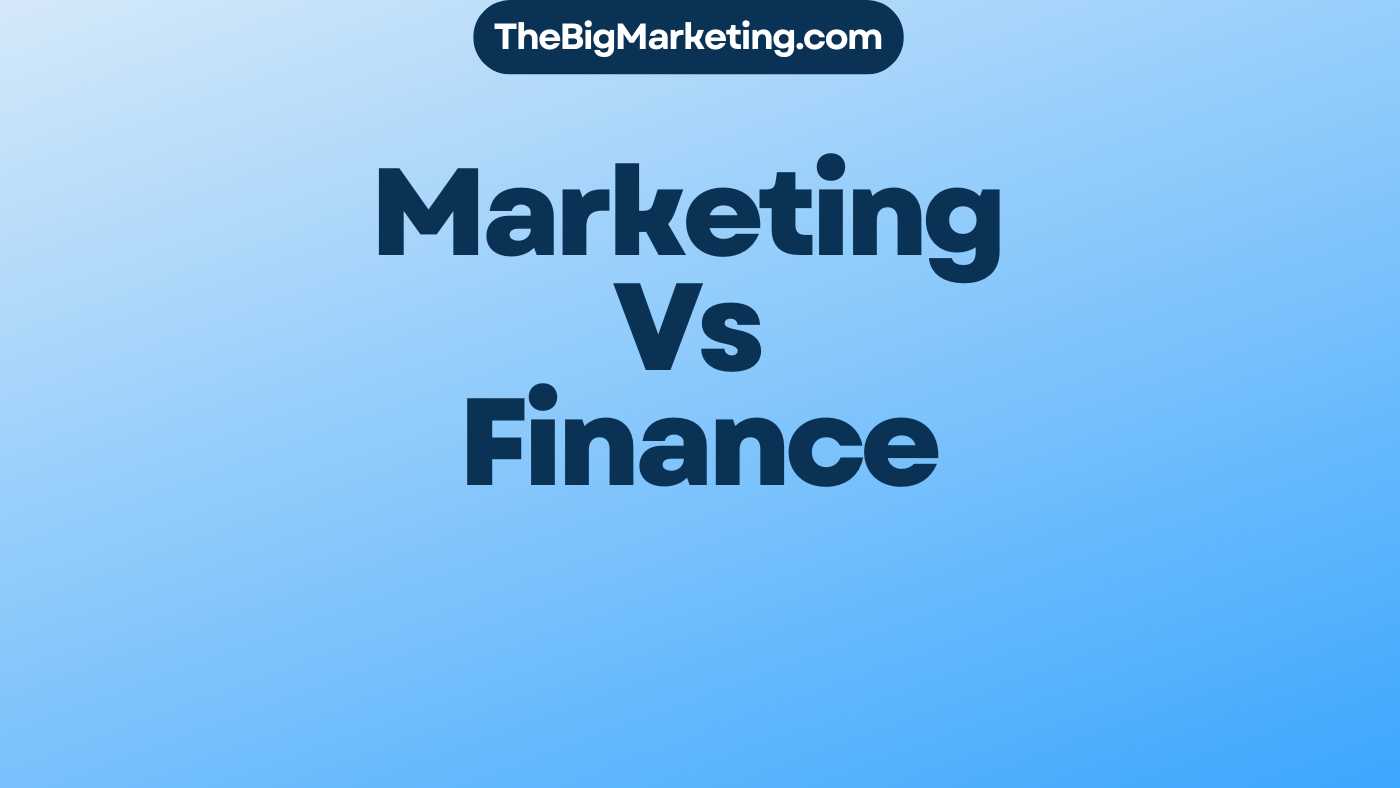Effective marketing and creative strategies play pivotal roles in achieving success at an organization. At the helm of these efforts are two key leaders: the Marketing Director and the Creative Director. While their titles may sound similar, their roles, responsibilities, and skill sets differ significantly. In this article, we will delve into the distinctions between a Marketing Director and a Creative Director, exploring how their unique contributions come together to drive a company’s overall success.
Key Takeaways:
- The Creative Director is primarily responsible for the artistic and visual elements of a brand, while the Marketing Director focuses on the overall marketing strategy and execution.
- The Marketing Director collaborates closely with various departments to integrate market research into the business strategy, while the Creative Director works closely with the marketing team to translate objectives into visually engaging campaigns.
- Marketing Directors have broader decision-making authority in high-level business strategies, while Creative Directors have decision-making authority in creative execution.
- Marketing Directors need skills in strategic thinking, data analysis, and leadership, while Creative Directors require a creative vision and design expertise.
- While their responsibilities differ, Marketing Directors and Creative Directors often collaborate on key aspects such as campaign development and brand positioning.
Defining Roles
A Marketing Director plays a pivotal role in spearheading a company’s marketing efforts. Their responsibilities encompass developing and implementing a comprehensive marketing strategy. This includes conducting market analysis, identifying target audiences, crafting compelling messaging, and overseeing advertising initiatives to maximize brand exposure and drive business growth.
On the other hand, a Creative Director is responsible for ensuring the artistic and visual aspects of a brand are captivating and aligned with its overall identity. They lead the creative team and are responsible for developing a distinct visual identity that resonates with the target audience. Creative Directors also focus on fostering innovation in the creative output, pushing boundaries, and delivering compelling campaigns that leave a lasting impact.
Collaboration and Synergy
Effective collaboration between the Marketing Director and the Creative Director is essential for the success of any organization. While the Marketing Director focuses on developing comprehensive marketing strategies, the Creative Director brings these strategies to life through visually appealing campaigns and designs.
The Marketing Director works closely with various departments such as sales, product development, and finance to integrate market research and consumer insights into the overall business strategy. This collaboration ensures that marketing efforts are aligned with the target audience and market trends.
Collaboration between Marketing Director and Other Departments:
| Collaboration Area | Description |
|---|---|
| Sales | The Marketing Director collaborates with the sales team to understand customer needs and preferences, align marketing efforts with sales goals, and drive revenue generation. |
| Product Development | Collaboration with the Marketing Director ensures that product features and benefits are effectively communicated to the target audience, contributing to successful product launches. |
| Finance | The Marketing Director works closely with the finance department to develop marketing budgets, allocate resources efficiently, and measure the return on investment (ROI) of marketing initiatives. |
Collaboration between Creative Director and Marketing Team:
The Creative Director collaborates closely with the marketing team to translate strategic objectives into visually engaging campaigns. This collaboration ensures that the creative output resonates with the target audience, effectively communicates the brand message, and supports the overall marketing strategy.
The marketing team provides the Creative Director with insights into the target audience, market trends, and campaign objectives. Armed with this information, the Creative Director leads the creative team in conceptualizing, designing, and producing visually captivating content that captures the attention and interest of consumers.
By bridging the gap between marketing strategy and creative execution, the collaboration between the Marketing Director and the Creative Director creates synergy and maximizes the impact of marketing campaigns.
Decision-Making Authority
When it comes to decision-making authority, both Marketing Directors and Creative Directors play crucial roles in driving a company’s success. Marketing Directors have a broader scope of decision-making, influencing high-level business strategies and marketing budgets. They determine how resources are allocated to achieve maximum impact in the market. On the other hand, Creative Directors have decision-making authority within the realm of creative execution. They hold the reins when it comes to determining the visual direction of campaigns and ensuring alignment with the brand’s identity. Their expertise in creative decision-making helps bring the marketing strategy to life in visually compelling and engaging ways.
While Marketing Directors shape the overall strategic direction of a company, Creative Directors contribute their insights and expertise to ensure that marketing efforts are translated into visually appealing and impactful campaigns. The collaboration between these two roles is essential in striking a balance between strategic objectives and creative execution.
| Marketing Director Decision-Making Authority | Creative Director Decision-Making Authority |
|---|---|
| Influence high-level business strategies | Determine the visual direction of campaigns |
| Allocate marketing budgets effectively | Ensure alignment with brand identity |
| Make resource allocation decisions | Oversee creative execution |
Required Skills
Both Marketing Directors and Creative Directors possess unique skill sets that are integral to their respective roles. Let’s take a closer look at the specific skills required for each position:
Marketing Director Skills:
- Strategic Thinking: Marketing Directors must have the ability to think critically and develop effective marketing strategies based on market trends and consumer insights.
- Data Analysis: Strong analytical skills are essential for Marketing Directors to interpret data and make data-driven decisions that drive marketing success.
- Market Research: A thorough understanding of market research methodologies and the ability to gather and analyze market data is crucial for Marketing Directors.
- Leadership: Marketing Directors must be effective leaders, capable of guiding and motivating their teams to achieve marketing goals and objectives.
- Communication: Excellent communication skills, both written and verbal, are necessary for Marketing Directors to effectively collaborate with internal teams, clients, and stakeholders.
Creative Director Skills:
- Creative Vision: Creative Directors must possess a strong artistic vision and the ability to conceptualize and translate ideas into visually compelling creative concepts.
- Design Expertise: A deep understanding of design principles and the latest design trends is crucial for Creative Directors to create visually impactful content.
- Team Leadership: Creative Directors need leadership skills to inspire and guide their creative teams, fostering a collaborative and innovative environment.
- Trend Awareness: Staying up to date with current design trends, consumer preferences, and industry innovations is essential for Creative Directors to create relevant and engaging creative content.
- Effective Communication: Clear and concise communication skills are vital for Creative Directors to effectively communicate their creative vision and objectives to the marketing team and clients.
In order to excel in their roles, both Marketing Directors and Creative Directors must continuously develop and refine these essential skills.
Overlapping Responsibilities
While the Marketing Director and the Creative Director have distinct primary responsibilities, their roles often intersect in various areas. Collaboration between these two leaders is crucial for the success of key aspects such as campaign development, brand positioning, and maintaining a cohesive brand image.
Marketing Directors and Creative Directors work together to align marketing strategies with creative execution, ensuring that the brand’s message and visual identity are effectively communicated to the target audience. This collaboration requires effective communication, mutual understanding, and a shared vision of the overarching business goals.
Through open dialogue and cooperation, Marketing Directors and Creative Directors can leverage their unique expertise and perspectives to create impactful campaigns that resonate with consumers while achieving the company’s marketing objectives.
By working together, Marketing Directors and Creative Directors can contribute to the overall success of the organization by effectively blending strategic marketing initiatives with visually compelling creative output. This collaborative partnership plays a vital role in building a strong brand presence and driving business growth.
Goal Alignment
Effective collaboration between Marketing Directors and Creative Directors is crucial for achieving organizational goals. While both roles contribute to the success of a company’s marketing efforts, they have distinct goals that align with their respective responsibilities.
Marketing Director Goals
- Align marketing strategies with overall business goals and objectives
- Drive revenue growth and increase market share
- Maximize return on marketing investment
- Bolster brand awareness and recognition
- Build strong customer relationships and loyalty
- Stay ahead of market trends and competitors
Creative Director Goals
- Ensure that creative output aligns with the brand’s identity and marketing strategy
- Create visually compelling and innovative campaigns that resonate with the target audience
- Enhance brand recognition and differentiate the brand from competitors
- Foster creativity and maintain a high standard of design excellence
- Collaborate with the marketing team to translate strategic objectives into creative concepts
- Drive creative innovation and push the boundaries of visual storytelling
The goal alignment between Marketing Directors and Creative Directors is essential for cohesive and impactful marketing efforts. The Marketing Director ensures that marketing initiatives support the overall business strategy, while the Creative Director focuses on delivering visually compelling and innovative creative output that aligns with the brand’s identity and marketing goals.
| Marketing Director Goals | Creative Director Goals |
|---|---|
| Align marketing strategies with overall business goals and objectives | Ensure that creative output aligns with the brand’s identity and marketing strategy |
| Drive revenue growth and increase market share | Create visually compelling and innovative campaigns that resonate with the target audience |
| Maximize return on marketing investment | Enhance brand recognition and differentiate the brand from competitors |
| Bolster brand awareness and recognition | Foster creativity and maintain a high standard of design excellence |
| Build strong customer relationships and loyalty | Collaborate with the marketing team to translate strategic objectives into creative concepts |
| Stay ahead of market trends and competitors | Drive creative innovation and push the boundaries of visual storytelling |
Decision Criteria
When it comes to making critical decisions, Marketing Directors and Creative Directors employ different sets of criteria based on their respective roles and responsibilities.
Marketing Directors rely on data-driven insights and market analysis to guide their strategies. By analyzing customer behavior, market trends, and competitive intelligence, they can make informed decisions that align with the company’s overall objectives. They balance qualitative factors, such as consumer preferences and brand perception, with quantitative metrics like ROI and market share. This ensures that their strategies are measurable, effective, and have a positive impact on the business.
Creative Directors, on the other hand, make decisions based on a combination of artistic vision and practical considerations. They are responsible for ensuring that the creative output aligns with the brand’s identity and resonates with the target audience. Creative Directors consider factors such as the brand’s visual aesthetics, artistic trends, and customer preferences. By balancing the artistic and commercial aspects, they create visually engaging campaigns that capture the essence of the brand while achieving marketing objectives.
By applying their respective decision criteria, Marketing Directors and Creative Directors bring unique perspectives to the table. Their collaboration and synergy enable them to make informed decisions that drive brand success and inspire creativity.
Marketing Director Decision Criteria:
- Data-driven insights
- Market analysis
- Consumer behavior
- Competitive intelligence
- Measurable metrics
- ROI and market share
- Brand perception
Creative Director Decision Criteria:
- Artistic vision
- Brand identity
- Visual aesthetics
- Artistic trends
- Customer preferences
- Marketing objectives
- Visual engagement
Leadership Style
Marketing Directors and Creative Directors bring distinct yet essential leadership styles to their respective roles. As the head of the marketing team, a Marketing Director adopts a strategic leadership style, prioritizing overall business objectives and driving the team towards success. They provide guidance, set goals, and make informed decisions that align marketing efforts with the company’s strategic vision.
In contrast, Creative Directors possess a unique leadership style that fosters innovation and excellence within the creative team. They inspire and motivate the team, encouraging out-of-the-box thinking and pushing creative boundaries. Creative Directors cultivate a culture of creativity, emphasizing the importance of design excellence and staying ahead of industry trends.
Having a Marketing Director with a strategic leadership style and a Creative Director with a focus on innovation and design excellence sets the stage for a dynamic and productive collaboration within the organization. By leveraging their distinct leadership approaches, Marketing Directors and Creative Directors create an environment that brings together strategic marketing initiatives and visually compelling creative output, ultimately driving the company’s overall success.
Outcome Focus
When it comes to achieving success in the business world, both Marketing Directors and Creative Directors play crucial roles. However, their areas of focus differ in significant ways.
Marketing Director: Driving Business Growth
A Marketing Director’s primary outcome focus is on achieving maximum impact through effective marketing strategies. They are responsible for developing and implementing comprehensive marketing plans that align with the company’s overall goals and objectives. By conducting market research, identifying target audiences, and analyzing consumer insights, Marketing Directors aim to drive business growth and achieve marketing goals.
Creative Director: Resonating with the Target Audience
On the other hand, a Creative Director’s outcome focus is on delivering visually compelling and innovative creative output. They lead the creative team in developing the visual identity of the brand, ensuring that it resonates with the target audience. Creative Directors strive to enhance brand recognition and create memorable campaigns that leave a lasting impact on consumers.
By combining the outcome-focused approach of a Marketing Director with the creative expertise of a Creative Director, organizations can achieve a harmonious balance between strategic marketing efforts and visually captivating creative execution.

| Marketing Director Outcome Focus | Creative Director Outcome Focus |
|---|---|
| Driving business growth through effective marketing strategies | Delivering visually compelling and innovative creative output |
| Achieving marketing goals and objectives | Increasing brand recognition |
| Targeting and resonating with the right audience | Creating memorable campaigns |
Understanding the Financials
When considering a career as a Creative Director or Marketing Director, it’s important to understand the financial aspects of these roles. In this section, we’ll explore the salary expectations for Creative Directors and Marketing Directors, as well as the financial responsibilities that Creative Directors undertake.
Creative Director Salary
The salary of a Creative Director can vary significantly based on several factors, including industry, company size, and geographic location. As of 2023, the average base salary for a Creative Director is $125,621 per year. However, it’s important to note that salaries can range from $80,000 to upwards of $200,000, depending on experience and qualifications.
Marketing Director Salary
In contrast, Marketing Directors typically earn a higher salary range due to their broader responsibilities and strategic roles within an organization. The average base salary for a Marketing Director is $140,799 per year, with potential earnings exceeding $200,000 for those in senior positions.
Now let’s delve into the financial responsibilities of Creative Directors. Alongside their creative duties, Creative Directors also play a crucial role in managing budgets, client billing, and team resource planning.
| Financial Responsibilities of Creative Directors |
|---|
| Budget Allocation |
| Client Billing |
| Team Resource Planning |
As Creative Directors oversee the creative process and ensure the successful execution of projects, they must also ensure that financial resources are allocated wisely. This includes determining how funds will be distributed across different campaigns, projects, and team needs.
Furthermore, Creative Directors are often involved in client billing, ensuring accurate and timely invoicing for creative services provided. They collaborate with finance and account management teams to ensure that client billing is in line with agreed-upon terms and contracts.
Lastly, Creative Directors are responsible for team resource planning. This involves evaluating the creative team’s workload, assigning team members to projects, and allocating resources efficiently to meet project deadlines and deliver exceptional results.
By effectively managing the financial aspects of their role, Creative Directors contribute to the overall success of their team, department, and organization.
Conclusion
In the ever-evolving business and marketing landscape, the roles of Marketing Directors and Creative Directors are distinct yet complementary. The synergy between strategic marketing initiatives and visually compelling creative execution is crucial for a brand’s success. A collaborative partnership between a visionary Marketing Director and a creative powerhouse in the form of a Creative Director can pave the way for innovative and impactful campaigns that resonate with consumers, driving overall business success.
FAQ
What is the difference between a Creative Director and a Marketing Director?
A Creative Director is responsible for the artistic and visual elements of a brand, while a Marketing Director focuses on developing and executing marketing strategies.
What are the primary responsibilities of a Marketing Director?
A Marketing Director is responsible for market analysis, identifying target audiences, developing messaging, and overseeing advertising efforts.
What are the primary responsibilities of a Creative Director?
A Creative Director is responsible for leading the creative team, developing the visual identity of a brand, and ensuring innovative and visually engaging creative output.
How do Marketing Directors and Creative Directors collaborate?
Marketing Directors and Creative Directors collaborate on key aspects such as campaign development, brand positioning, and maintaining a cohesive brand image.
What decision-making authority does a Marketing Director have?
Marketing Directors have decision-making authority in high-level business strategies and marketing budgets.
What decision-making authority does a Creative Director have?
Creative Directors have decision-making authority within the scope of creative execution and determining the visual direction of campaigns.
What skills does a Marketing Director require?
Marketing Directors need skills in strategic thinking, data analysis, market research, leadership, and communication.
What skills does a Creative Director require?
Creative Directors require a creative vision, design expertise, team leadership, trend awareness, and effective communication with the marketing team.
What are the overlapping responsibilities of Marketing Directors and Creative Directors?
Marketing Directors and Creative Directors overlap in key areas such as campaign development, brand positioning, and maintaining a cohesive brand image.
What is the goal alignment between Marketing Directors and Creative Directors?
Marketing Directors align marketing efforts with broader company goals, while Creative Directors ensure that the creative output aligns with the brand’s identity and marketing strategy.
What criteria do Marketing Directors consider in decision-making?
Marketing Directors consider data-driven decisions, market insights, and a balance of qualitative and quantitative factors.
What criteria do Creative Directors consider in decision-making?
Creative Directors balance artistic vision with practical considerations such as target audience preferences and marketing objectives.
What is the leadership style of Marketing Directors?
Marketing Directors adopt a strategic leadership style, focusing on overall business objectives and guiding the marketing team towards success.
What is the leadership style of Creative Directors?
Creative Directors inspire and lead the creative team with a focus on innovation and design excellence, fostering a culture of creativity within the organization.
What is the outcome focus of Marketing Directors?
Marketing Directors aim to achieve maximum impact through effective marketing strategies, driving business growth and achieving marketing goals.
What is the outcome focus of Creative Directors?
Creative Directors focus on delivering visually compelling and innovative creative output that resonates with the target audience and enhances brand recognition.
What are the financial responsibilities of Creative Directors?
Creative Directors are responsible for budget allocation, client billing, and team resource planning.






